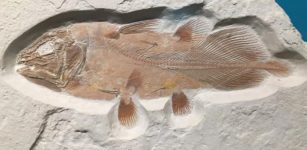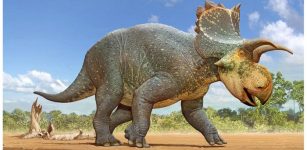Amazing Secret Properties Of Plants – Why Humans And Plants Resemble Each Other!
MessageToEagle.com – What do plants and humans have in common? Actually, more than most people realize.
Plants possess a number of amazing properties and they can “behave” similar to us.
Plants are very much alive. Not only do they dislike human noise but they also posses the capacity to learn and communicate. Perhaps even more astonishing is that plants can also make music and they can sing.
Plants can also sense danger and know exactly how to avoid predators.
In recent years, scientists have uncovered surprising biological connections between humans and other forms of life.
Researchers have revealed that plant and human biology is much closer than has ever been understood and the study of these similarities could uncover the biological basis of diseases like cancer as well as other “animal” behaviors.
Not long ago, a group of researchers discovered that although plants are deaf they can feel, see, smell and remember.
Now, according to a recent study plants can also be altruistic!

The researchers looked at corn, in which each fertilized seed contained two “siblings” — an embryo and a corresponding bit of tissue known as endosperm that feeds the embryo as the seed grows, said CU-Boulder Professor Pamela Diggle. They compared the growth and behavior of the embryos and endosperm in seeds sharing the same mother and father with the growth and behavior of embryos and endosperm that had genetically different parents.
“The results indicated embryos with the same mother and father as the endosperm in their seed weighed significantly more than embryos with the same mother but a different father,” said Diggle, a faculty member in CU-Boulder’s ecology and evolutionary biology department. “We found that endosperm that does not share the same father as the embryo does not hand over as much food — it appears to be acting less cooperatively.”
“One of the most fundamental laws of nature is that if you are going to be an altruist, give it up to your closest relatives,” said Friedman.
“Altruism only evolves if the benefactor is a close relative of the beneficiary. When the endosperm gives all of its food to the embryo and then dies, it doesn’t get more altruistic than that.”
See also:
Amazing Phenomenon Of Singing Plants
Human Noise Has A Negative Effect On Plants
Plants Can Feel See Smell And Remember
In corn reproduction, male flowers at the top of the plants distribute pollen grains two at a time through individual tubes to tiny cobs on the stalks covered by strands known as silks in a process known as double fertilization. When the two pollen grains come in contact with an individual silk, they produce a seed containing an embryo and endosperm. Each embryo results in just a single kernel of corn, said Diggle.
The team took advantage of an extremely rare phenomenon in plants called “hetero-fertilization,” in which two different fathers sire individual corn kernels, said Diggle, currently a visiting professor at Harvard. The manipulation of corn plant genes that has been going on for millennia — resulting in the production of multicolored “Indian corn” cobs of various colors like red, purple, blue and yellow — helped the researchers in assessing the parentage of the kernels, she said.

Wu, who cultivated the corn and harvested more than 100 ears over a three-year period, removed, mapped and weighed every individual kernel out of each cob from the harvests. While the majority of kernels had an endosperm and embryo of the same color — an indication they shared the same mother and father — some had different colors for each, such as a purple outer kernel with yellow embryo.
Wu was searching for such rare kernels — far less than one in 100 — that had two different fathers as a way to assess cooperation between the embryo and endosperm.
“It was very challenging and time-consuming research,” said Friedman. “It was like looking for a needle in a haystack, or in this case, a kernel in a silo.”
Endosperm — in the form of corn, rice, wheat and other crops — is critical to humans, providing about 70 percent of calories we consume annually worldwide.
“The tissue in the seeds of flowering plants is what feeds the world,” said Friedman, who also directs the Arnold Arboretum at Harvard.
“If flowering plants weren’t here, humans wouldn’t be here.”
© MessageToEagle.com










